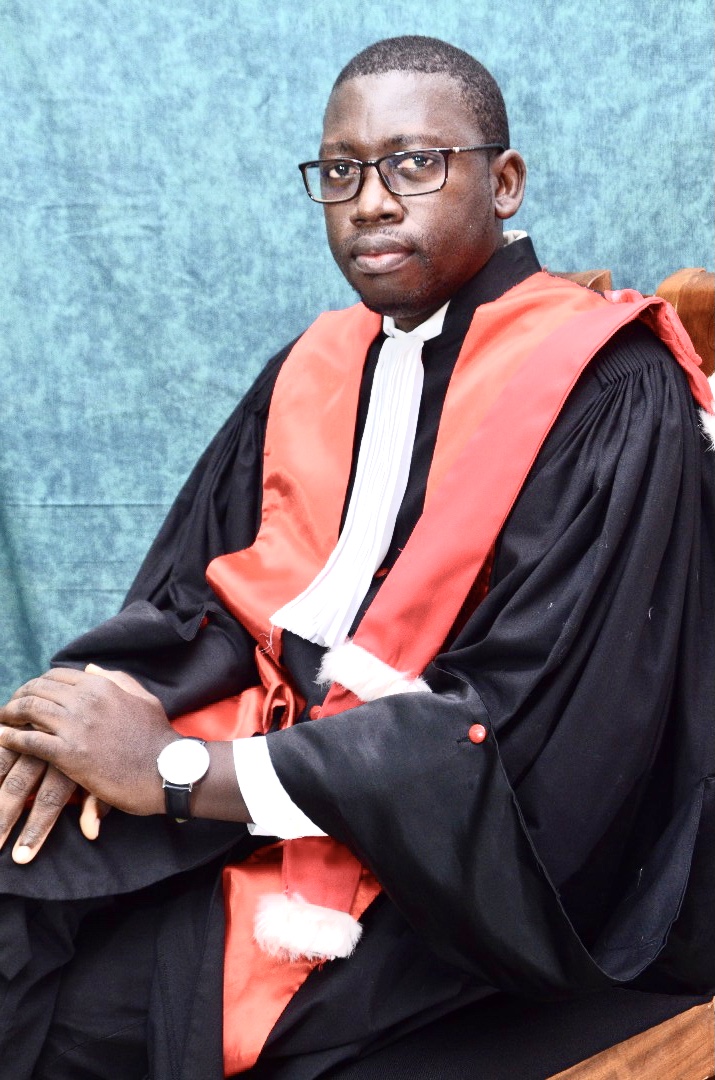Review Article
Ayurveda and Herbs as “Fusion Medicines”: Alternatives or Adjuvants to Address Antimicrobial Resistance-A Review
1Zoology department, GEM Model College, Durg city, Chhattisgarh, India.
2Trustee, RANWA NGO, Ganesh Nagar, Pune, India.
*Corresponding Author: Utkarsh Ghate, Trustee, RANWA NGO, Ganesh Nagar, Pune, India.
Citation: Kulkarni H., Ghate U. (2025). Ayurveda and Herbs as “Fusion Medicines”: Alternatives or Adjuvants to Address Antimicrobial Resistance (AMR)- A Review, International Journal of Biomedical and Clinical Research, BioRes Scientia Publishers. 3(3):1-7. DOI: 10.59657/2997-6103.brs.25.056
Copyright: © 2025 Utkarsh Ghate, this is an open-access article distributed under the terms of the Creative Commons Attribution License, which permits unrestricted use, distribution, and reproduction in any medium, provided the original author and source are credited.
Received: February 05, 2025 | Accepted: February 21, 2025 | Published: February 26, 2025
Abstract
The herbal and traditional systems of medicines including Ayurveda and Chinese present many valuable bioactives for further research and development to contain the rising anti-microbial resistance (AMR) worldwide. These include Asparagus, Indian ginseng (Withania somnifera), Indian berberis (Tinospora cordifolia), Neem (Azadirachta indica), Indian Kudzu (Pueraria tuberosa) among others. They can act synergistically including with the modern antibiotics for better efficacy, safety and saving cost and pain, efforts. The mechanism of action of promising Bioactives such as “Quercetin” and “Curcumin” includes quorum sensing (QS), inhibition of biofilm, destruction of cell wall or disruption of cell cycle, antioxidant nature and modulation of host immunity. Poor bioavailability of bioactives is a challenge and nanotechnology can help in higher efficacy.
Keywords: bioactives; biofilm; cellular disruption; nanotechnology
Introduction
Antimicrobial resistance (AMR) is among the top public health risk worldwide [1]. Bacterial AMR was estimated to cause 1.27 million global deaths in 2019 and secondary cause in nearly 5 million deaths. WHO states that AMR is mainly caused by the misuse (wrong prescription) and overuse of antimicrobials in humans and animals leading to the evolution of drug-resistance among the emerging pathogens strains [2]. Further, poverty implies lack of sanitation, hygiene and medical care, so AMR affects harshly the low- and middle-income countries. AMR challenges the gains of modern medicine, making it harder to treat infections and makes other medications risky such as cancer chemotherapy, surgery and caesarean sections. World Bank estimates that AMR could inflict by 2050 additional healthcare costs of US$ 1 trillion, and by 2030 gross domestic product (GDP) losses per year of GDP US$ 1 trillion to US$ 3.4 trillion [3]. As the extant antibiotics fail to provide relief or cure the drug companies advance their newer versions but that too begin to fail after a few years against the ever-evolving microbes. Cephalosporin, Tetracycline and Levofloxacin, are favorite antibiotics since 1950s for instance, and are in their 5th generation or found ineffective in a decade or two [4].
Hence, alternatives to antibiotics are being developed, including from natural products such as phytochemicals [5-7]. This includes traditional systems of medicine such as Ayurveda [8,9] and the Traditional Chinese medicine (TCM) [10]. In TCM, the anti-microbial effects mechanism postulated includes quorum sensing (QS), inhibition of biofilm, bactericidal effects and modulation of host immunity [10]. QS is a bacterial cell-cell communication mechanism that regulates bacterial gene expression in a population density-dependent manner. In fact, Ayurvedic medicines such as herbal decoction was regularly consumed in large number of Indian families during COVID-19 pandemic during 2020-22 and could have caused higher immunity and 3-4 times lower prevalence and mortality due to the bioactives such as polyphenols elucidating their mechanism of action [11,12].
Antibiotic-Less Surgery and Bioactives
A striking example of Ayurveda use in avoiding antibiotic made news in 2017 as Benign Prostate Hyperplasia (BPH) surgery of the ‘clean contaminated’ class was done without the use of any antibiotic [13]. The patient had a history of severe intolerance to them. It needed routinely 3 doses of prophylactic antibiotic as American Urology Association recommendations. It was 83-year-old male patient with acute urinary retention. His BPH was managed continuously on Ayurvedic therapy for many years but needed inevitable surgery later but antibiotic prophylaxis avoidance seemed unusual, challenging. Holmium laser enucleation of prostate (HOLEP) was done with Ayurvedic medicine support sans antibiotics. The post-operative recovery was unusually faster and remarkable. Considering WHO call for post-antibiotic era, this successful case requires research into Ayurveda, to address AMR.
The patient was operated upon for removal of BPH on 1st March, 2016, at Anand hospital, Meerut. Post- operative recovery was exceptionally quick and he was discharged from the hospital in a satisfactory condition on 3rd March, 2016. Ayurvedic medicines were started 3 days pre-operatively and continued for two weeks post-operatively in doses and combinations as prescribed by a team of competent Ayurvedic physicians of the country. It contained the herbs below in Table 1.
Table 1: Herbs, bioactives and antimicrobial action of Ayurvedic prophylaxis in Surgery.
| Ayurvedic Herb | Botanical Name | Bioactives & Antimicrobial Action |
| 1. Amla [14], (Embelic Myrobylan) | Emblica officinalis | “Flavonoids” inhibit RNA synthesis. Tannins inhibit extracellular microbial enzymes, depriving substrate, inhibit oxidative phosphorylation* |
| 2. Giloy [15], (Indian Berberin)*# | Tinospora cordifolia | “Cordifoliside” C interacts with the TolB protein inhibiting growth |
| 3. Haldi Extract (Turmeric), [16] | Curcuma longa | “Curcumin” disrupts microbial cell structures to inhibit essential microbial enzymes, modulate host immune responses |
| 4. Neem (Indian lilac, Margosa), [17] | Azadirachta indica | “Azadirachtin”, anti-biofilm-forming strains |
| 5. Shigru (Drumstick), [18] | Moringa oleifera | “Free fatty acids” show detergent properties to disrupt the cellular membrane integrity or the enzymes functionality in the electron transport. |
| 6. Tulsi (Holy Basil), [19,20] | Ocimum sanctum | “Eugenol” reduces the production of pyocyanin and Pseudomonas quinolone signal (PQS) PQS, inhibits biofilm, anti-listerial biofilm agent#, Inhibition of ergosterol biosynthesis [21] |
*Also, Phenol’s control protein to lipid ratio, functioning of membrane and ion channels, Catechins disrupt membrane integrity of lipid bilayers. Kaempferol inhibits protein kinase C and possess high antibacterial properties for combating multidrug-resistant pathogens (MRSA and VRE). *#also- Heart-leaved moonseed. #Further, synergistic interactions between the many constituents found within plant extracts may provide a benefit over a single isolated ingredient; this may explain the efficacy of lower doses of herbal products like neem oil as compared to individual compounds [17]. Besides the study underscores the synergistic effect of neem/ other herbs/ phytochemicals as antibiotics adjuvants as beneficial, including multidrug-resistant enteric bacterial species.
Moreover, the ingredients drugs include “Panchtikta Ghrita Guggulu” which is commonly used formulations by Ayurvedic Physicians for Kushta (leukoderma), Visarpa (herpes), Arsha (Piles), Bhagandar (Fissures) etc. It contains the herbs Vasa (Adhatoda vasica), Nimba (Azadirachta indica), Guduchi (Tinospora cordifolia), Kantakari (Solanum surattense), Patola (Tricosanthes dioica) and Ghrita (Cow’s Milk Fat). Antimicrobial study of Panchatikta Ghrita was studied against E. coli, Streptococcus pyogens, Staphylococcus aurens, Salmonella typhi, Candida albicans [22]. A study compiled antimicrobial effect of 56 Ayurvedic herbs [23,24].
Infection Wise Herbs Case Studies
Urinary Tract
Prevalence of uropathogens and antimicrobial potential of 3 ayurvedic herbs viz., Anantmul (Hemidesmus indicus), Gulkhair (Malva sylvestris) and Manjishtha (Rubia cordifolia) against the urinary tract infection pathogens was studied in Uttarakhand state [25]. The most prevalent pathogen was E. coli (42%) but Alcaligenes faecalis (3%) the least. The methanolic extract of Manjishtha exhibited maximum antibacterial property against E. coli (29.3±0.47mm) The methanolic extract of Gulkhair showed highest potential against E. coli (23.7±0.94 mm) while aqueous extract of Gulkhair exhibited maximum antimicrobial effect against E. coli (18.7±0.25 mm). The methanolic extract of Anantmul exhibited medium antibacterial property against E. coli (18.3±0.47mm).
Gastric Ailments
Important Ayurvedic formulations’ effect on various enteric microbes were tested viz. Escherichia coli, Staphylococcus aureus, Enterobacter aerogenes, Pseudomonas aeruginosa, Bacillus subtilis, Klebsiella pneumoniae, Salmonella typhi, Staphylococcus epidermidis, Salmonella typhimurium and Proteus vulgaris [26]. Triphala Churna, Hareetaki Churna, Dashmula Churna were found potent antibacterial agents against S. epidermidis, P. vulgaris, S. aureus, E. coli, P. aeruginosa and S. typhi. These are just 2 examples, among the numerous such reports.
Leukorrhea Wound Healing
Leukorrhea or vaginitis could be primarily caused by yeast infections, bacterial vaginosis or Trichomoniasis. The hydro-alcoholic extract of a novel vaginal herbal formulation was prepared by adding Ayurvedic dried stems of Neem (Azadirachta indica) and Seeta Ashoka (Saraca asoca) trees, used for heavy menstrual bleeding (HMB). Antimicrobial action was evident in pre-clinical studies, no toxicity, phenolic compounds’ presence and sustained drug release pattern for this muco-adhesive vaginal tablet. This double-blind randomized clinical study comprised 363 females equally divided into the placebo, standard drug, and four research drug groups for 15 days. Subjective primary and secondary symptoms as well as objective biochemical parameters and vaginal fluid were analysed pre & post treatment. Clinical study results indicated that all 4 research drug groups exhibited comparable or better therapeutic efficacy compared than the standard drug- Candid V-6 tables (ER, drug Clotrimazole (100mg)) of Glenmark pharmaceuticals. The research formulation resulted in 80-90% inhibition of subjective symptoms and demonstrated strong and significant (p lessthan 0.05) antimicrobial action. Seeta Ashoka is a dream tree with multiple uses including gynecological issues, where its favorite drug, due to tannin and polyphenol bioactives and aids in wound healing like many other Ayurvedic herbs [24]. But its bark is harvested which is destructive practice and tree population is small, limited to southern western Indian mountains besides Sri Lanka so it’s a threatened with extinction, and its substitution by Coriander or other such cultivated herbs is necessary to avoid resource depletion and scarcity in future [28].
Ayurvedic Herbs to Manage Viral Diseases
Psoriasis
Ayurveda treatment of Vaman-Virechana (vomiting-laxatives) effectiveness was observed in managing the recurrent psoriasis of a 38-year male having psoriasis and mild arthritis was diagnosed by Ayurveda as Ekkustha (Kapha-Pitta Dominance) Ayurveda [29]. Vomiting-laxatives and aforesaid Panchtiktaghrit Gugglu were administered and the symptoms were assessed with Psoriasis Area and Severity Index (PASI) score at pre and post therapy in 6 months follow up en the PASI score Improved (reduced from 37.7 to 8.7). During follow up period no recurrence observed.
Herpes
A 65-year-old female known case of Type 2 Diabetes (DM) in Casualty of Government Ayurved College, Nagpur (GACN) also suffered from Herpes (H. zoster) who was treated by Ayurvedic principles of Pittaj Visarpa. Bloodletting with Jalauka (~Medicinal Leeches- Hirudo medicinalis) and internal medication mainly comprising (Asparagus racemosus) + Gokshur 2 gm (Tribulus terestris) + Lodhra (Symplococus racemosus) [30]. Rapid decrease in pain severity was observed after the 1st setting of leech therapy according to Zoster Specific Brief Pain Inventory (ZBPI) Questionnaire. Pain reduced after each seating. Repeated Jalauka application along with internal medications led to the complete relief. Type 2 DM was treated as per modern medicine. Ayurveda pain management in Herpes zoster by leech therapy gives innovative easy, better and cost-effective treatment. Leech is abundant, not threatened animal and not under any wildlife trade restriction schedule. Other clinical study on Ayurveda cure of herpes is also noted [31].
Asparagus contains bioactives steroidal saponins, Tribulus contains polyphenols with ample flavonoids and Symplocos contains flavanol glucosides like Ellagic acid and alkaloides like Loturine [32]. It’s a tree threatened with extinction vide IUCN red listing criterion so needs to be substituted by cultivated herbs as Coriander as in the aforesaid case of Seeta Ashoka [33].
COVID-19
All India Medical Sciences (AIMS) institute, Jodhpur conducted study of 150 mild-moderate COVID-19 patients who were enrolled and randomized in 1:1 to NAOQ19 and placebo group [34]. RT-PCR was done on Day 3, 5 and 7. CBC, CRP, LFT, and KFT were assessed at baseline and exit. The ayurvedic preparation given along with standard of care therapy reduced the duration of hospital stay and there was earlier conversion to RT-PCR negative. The integrated approach can help to reduce patient workload in the hospitals as well as limit the transmission of the virus in the community. The novel Ayurvedic herbs-based formulation contained- Ashwagandha- Withania Somnifera, Bilwa-Aegle Marmelos, Yashtimadhu (Licorice)- Glycyrrhiza glabra, Vasaka (Malabar nut)- Adhatoda Vasica, Pippali (Black Pepper)- Piper Longum, Bhumiamla- Phyllantus fraternus, Bhunimba- Andrographis paniculata, Turmeric, Tulsi, Giloy among others, all being proven antimicrobial herbs.
Docking Studies at Pune university, India indicated that many phyto-constituents of Ashwagandha (Indian Ginseng, Withania somnifera) such as Withanoside and Rutin (a Quercetin precursor) from Asparagus and Tinosporasaide from Giloy affect the (a) Spike protein, (b) Main Protease and (c) RNA polymerase of the virus, and indicating no adverse herb-drug pharmacokinetic-pharmacodynamic interactions the conventional drug therapy. But oral bioavailabity remained poor [35], so nanotechnology may help to deliver.
Some Rasayana (i.e., anti-aging, vide Ayurveda) drugs are common in diet, and most families drank spice decoction daily called “Kadha” in vernacular, consisting of Tulsi (Hoy Basil)/ Giloy/ Licorice/ Arjuna described below (Terminalia arjuna) during the COVID-19 pandemic to raise immunity [11,12,36]. The most important immunomodulatory Indian herbs include the Giloy i.e., heart-shaped moon seed” and Licorice (Glycyrrhiza glabra) that modulate the response of CD4+ and CD 8+ T cells against viral infections. In silico studies showed that the regular spice consumption caused lower health damage countrywide as seen multi-location drug user feedback [37]. Similarly, astringent fruit Embelic Myrobylan (Phyllanthus emblica) that forms the bulk of the above tonic and is often consumed as pickle or jam or juice in many Indian families enhances the immunity both in vitro and in vivo, especially in natural killer (NK) cell-induced cytotoxic activity [38].
Other Important Herbs, Bioactives & Synergy
Bael: The leaves, roots, and fruits of Bael tree (Aegle Marmelos) exhibit significant antimicrobial activity against many bacteria and anti-inflammatory effects due to the presence of various phytochemicals like Skimmianine, Marmelosin, and quercetin. Health promoting activities of Quercetin including antimicrobial are well known [40].
Triphala: It is among the most potent of Ayurvedic drugs, used for multiple purposes effectively, consisting of 3 fruits of wild trees- Embellic Myrobyllan (Phyllanthus Emblica), Belleric Myrobylan (Terminalia Bellerica) and Chebulic Myrobylan (T. Chebula) [40]. These fruits are rich in tannins and polyphenols, mainly flavonoids such as Asorbic acid (Vitamin C), Gallic acid, Catechin, and Emblicanin [41]. It has among the highest of antioxidant values among Ayurvedic herbs and global list of herbs & spices. Tannin’s toxicity may be related to their action on membranes of the microorganisms. Complexation of metal ions by tannins may account for tannin toxicity. Catechol and pyrogallol both are hydroxylated phenols, shown to be toxic to microorganisms. The phenolic toxicity mechanisms to microorganisms include enzyme inhibition by the oxidized compounds, possibly through reaction with sulfhydryl groups or through more non-specific interactions with the protein. “Bhasma” i.e., ash of Triphala termed as “Mashi” contains phenol group may be related to their relative toxicity to microorganisms, with evidence that increased hydroxylation results in increased toxicity. It is more potent than Triphala and this could be due to its nano particles that penetrate the tissues more with higher efficacy.
Vidari: The ethanolic and methanolic extract of leaf, stem, and tuber of Vidari i.e., Indian Kudzu (Pueraria tuberosa), an ethno-veterinary medicinal plant tonic in Ayurveda showed a wide range of antimicrobial activity against bacteria, Escherichia coli, Bacillus cereus, Salmonella paratyphi, and Staphylococcus aureus, as well as fungus, Candida albicans, Aspergillus fumigates, and Alternaria solani, on agar diffusion assay [42,43].
Challenges and Considerations
Poor bioavailability of bioactives such as Quercetin is a challenge and nanotechnology can address it for higher efficacy [40]. Synergistic effect of bioactives in single plants such as peptides, used singly or as adjuvant with allopathic medicines is beneficial and needs further research [44,45]. For, it may help further promote traditional Chinese medicine (TCM) and Ayurveda globally [46]. For, higher risk of AMR in patients of cancer- a leading global disease burden is indicated [47,48] and also the superfoods’ utility to address it [49].
This study is constrained by being only desk research and few multi-drug, multi-location trials can validate its findings.
Conclusion
The herbal and traditional systems of medicines including Ayurveda and Chinese present many valuable bioactives for further research and development to contain the rising anti-microbial resistance (AMR) worldwide. They can act synergistically including with the modern antibiotics for better efficacy, safety and saving cost and pain, efforts. The mechanism of action is multiple such as quorum sensing (QS), inhibition of biofilm, destruction of cell wall or disruption of cell cycle, antioxidant nature and modulation of host immunity.
Declarations
Acknowledgements
We thank our institutions for their moral support.
Declaration
This desk research received no external funding support and is original contribution.
References
- Antimicrobial Resistance Collaborators. (2022). Global Burden of Bacterial Antimicrobial Resistance in 2019: A Systematic Analysis. The Lancet; 399(10325):629-655.
Publisher | Google Scholor - WHO. (2023). Antimicrobial resistance- Fact-Sheet. World Health organization, Geneva.
Publisher | Google Scholor - Jonas O. B., Irwin, A., Berthe, F. C. J., Frank C. J., Gall L., et al. (2017). Drug-Resistant Infections: A Threat to Our Economic Future (Vol. 2): Final Report. World Bank, Washington.
Publisher | Google Scholor - Salam MA, Al-Amin MY, Salam MT, Pawar JS, Akhter N, et al. (2023). Antimicrobial Resistance: A Growing Serious Threat for Global Public Health. Healthcare. 11(13):1946.
Publisher | Google Scholor - Joshi R, Patil P, Ghate U, Yadav S, Raturi DP, et al. (2024). Waterborne Zoonotic Diseases and Antimicrobial Resistance: Indian Policy and One health Approach. Int J Pathogen Res. 13(4):95-104.
Publisher | Google Scholor - Arip M, Selvaraja M, R M, Tan LF, Leong MY, Tan PL, et al. (2022). Review on Plant-Based Management in Combating Antimicrobial Resistance - Mechanistic Perspective. Front Pharmacol. 13:879495.
Publisher | Google Scholor - Singh, S., Singh, A. (2019). Efficacy of Traditional Herbs in The Treatment of Bacterial Resistance. Journal of Ethnopharmacology, 230:100-115.
Publisher | Google Scholor - Gupta, P. D., Birdi, T. J. (2017). Development of Botanicals to Combat Antibiotic Resistance. J. Ayurveda Integr. Med. 8:266-275.
Publisher | Google Scholor - Patwardhan, B., Payyapalli, U. (2018). Ayurveda and Anti-Microbial Resistance. J Ayurveda Integr Med. 9(2):85-86.
Publisher | Google Scholor - Zheng P., Zhu Q. (2021). Traditional Chinese Medicine is an Alternative Therapeutic Option for Treatment of Pseudomonas aeruginosa Infections. Front Pharmacol. 12:737252.
Publisher | Google Scholor - Ghate, U., Kulkarni, H. (2021). Polyphenols, Spices and Vegetarian Diet for Immunity and Anti-Inflammatory Drug Design. IntechOpen.
Publisher | Google Scholor - Ghate U. Kulkarni H., (2023). Spices, Unpacked Diet, Bio Actives and Immunity: Indian Health & Pandemic. European J Sci, Innov Tech. 2(3):422-441.
Publisher | Google Scholor - Yadav S, Jain S, Chaudhary J, Bansal R, Sharma M. (2017). The Role of Ayurveda Management in Preventing Surgical Site Infections Instead of Surgical Antibiotic Prophylaxis. J Ayurveda Integr Med. 8(4):263-265.
Publisher | Google Scholor - Sandip Kumar Khurana, Ruchi Tiwari, Khan Sharun, Mohd. Iqbal Yatoo, Mudasir Bashir Gugjoo et al. (2019). Emblica Officinalis (Amla) with a Particular Focus on its Antimicrobial potentials: A Review, J Pure Appl Microbiol., 13(4):1995-2012.
Publisher | Google Scholor - Nath H, Khataniar A, Bania KK, Mukerjee N, Al-Hussain SA, et al. (2023). Nano-Functionalization and Evaluation of Antimicrobial Activity of Tinospora Cordifolia Against the TolB Protein of Pseudomonas Aeruginosa - An Antibacterial and Computational Study. Front Microbiol. 14:1138106.
Publisher | Google Scholor - Gul P., Bakht J. (2015). Antimicrobial Activity of Turmeric Extract and Its Potential Use in Food Industry, Journal of Food Science and Technology, 52:2272.
Publisher | Google Scholor - Wylie M.R., Merrell D.S. (2022). The Antimicrobial Potential of the Neem Tree Azadirachta Indica. Front Pharmacol. 13:891535.
Publisher | Google Scholor - Anzano A, de Falco B, Ammar M, Ricciardelli A, Grauso L, et al. (2022). Chemical Analysis and Antimicrobial Activity of Moringa oleifera Lam. Leaves and Seeds. Molecules. 27(24):8920.
Publisher | Google Scholor - Mak KK, Kamal MB, Ayuba SB, Sakirolla R, Kang YB, et al. (2019). A Comprehensive Review on Eugenol’s Antimicrobial Properties and Industry Applications: A Transformation from Ethnomedicine to Industry. Phcog Rev. 13:1-9.
Publisher | Google Scholor - Vergis J., Gokulakrishnan P., Agarwal R.K., Kumar A. (2015). Essential Oils as Natural Food Antimicrobial Agents: A Review. Crit. Rev. Food Sci. Nutr. 55:1320-1323.
Publisher | Google Scholor - Chouhan S, Sharma K, Guleria S. (2017). Antimicrobial Activity of Some Essential Oils-Present Status and Future Perspectives. Medicines. 4(3):58.
Publisher | Google Scholor - Bhoyar M S., Panchabhai S, Ahirrao R. (2017). Standard Operating Procedure of Panchatikta Ghrita and Study of its Antimicrobial Activity. International Journal of Ayurveda and Pharma Research. 5(1):11-16.
Publisher | Google Scholor - Jadhav G M, Dewaikar S J, Choudhari S. (2022). Study of Certain Krumighna Ayurvedic Plants & Their Antimicrobial Activity in Therapeutic Science: A Literature Review. World J Pharma Medi. Res. 8(9):64-68.
Publisher | Google Scholor - Sijna V.P., Anjana R., Radhakrishnan A., Vineetha N., Jaseena C. (2021). Antimicrobial Resistance (AMR): An Ayurvedic Insight. International Journal of Health Sciences and Research. 11(1):80-87.
Publisher | Google Scholor - Rawat, S., Swarup, S. (2015). Antimicrobial Activity of Ayurvedic Herbs Against Urinary Tract Infection Pathogens. J Chemical Pharma Res. 7(4):1461-1465.
Publisher | Google Scholor - Tambekar D. H., Dahikar, S. B. (2011) Antibacterial Activity of Some Indian Ayurvedic Preparations Against Enteric Bacterial Pathogens. J Adv Pharm Technol Res. 2(1):24-29.
Publisher | Google Scholor - Gupta M, Majumdar, S., Banerjee, S., Pal, S, Mondal, T. (2020). A Double-Blind Randomized Clinical Trial of Novel Ayurvedic Muco-Adhesive Extended-Release Vaginal Tablet (NA) For Treatment of Leucorrhea. International Journal of Clinical Obstetrics and Gynaecology. 4(2):324-333.
Publisher | Google Scholor - Ghate U, Kulkarni H, Deshpande M, Akkalkotkar M. (2022). Threatened Ayurvedic Herb (Seeta Ashoka) Substitution Options for Menorrhagia- based on Bioactive Principle’s Molecular Docking Study. Int. J. Pharm. Investigation. 12(3):250-254.
Publisher | Google Scholor - Anshul, Rohilla P., Parvesh K., Raheja S. (2020). Management of Psoriasis Through Ayurveda: Case. Environment Conservation Journal, 21(1&2):177-181.
Publisher | Google Scholor - Nakanekar A, Khobarkar P, Dhotkar S. (2020). Management of Herpes Zoster in Ayurveda Through Medicinal Leeches and Other Composite Ayurveda Treatment. J Ayurveda Integr Med. 11(3):352-356.
Publisher | Google Scholor - Bhairaji P. K., Polampalli V. (2023). A Successful Clinical Case Study on Management of Visarpa. Ayushdhara. 10(4):100-104.
Publisher | Google Scholor - Sood H, Kumar Y, Gupta VK, Arora DS. (2020). Bioprospecting the Antimicrobial, Antibiofilm and Antiproliferative Activity of Symplocos Racemosa Roxb. Bark Phytoconstituents Along with Their Biosafety Evaluation and Detection of Antimicrobial Components by GC-MS. BMC Pharmacol Toxicol. 21(1):78.
Publisher | Google Scholor - Kulkarni K., Ghate U. (2024). Eco-Agriculture for Herbs & Bioactives Trade, Export, Biodiversity Conservation and Consumer Health in India. J Agri Res, 9(4):000379.
Publisher | Google Scholor - Bhardwaj P, Ganapathy K, Pathania M, Naveen KH, Charan J, et al. (2023). Effectiveness of Ayurvedic Formulation, NAOQ19 Along with Standard Care in The Treatment of Mild-Moderate Covid-19 Patients: A Double Blind, Randomized, Placebo-Controlled, Multicentric Trial. Journal of Ayurveda and Integrative Medicine, 14(6):100778.
Publisher | Google Scholor - Borse S, Joshi M, Saggam A, Bhat V, Walia S, et al. (2021) Ayurveda Botanicals in Covid-19 Management: An in Silico Multi-Target Approach. PLoS ONE. 16(6):e0248479.
Publisher | Google Scholor - Singh, N. A., Kumar, P., Jyoti, Kumar, N. (2021). Spices And Herbs: Potential Antiviral Preventives and Immunity Boosters During Covid-19. Phytotherapy Research, 35(5):2745-2757.
Publisher | Google Scholor - Singh R, Goel S, Bourgeade P, Aleya L, Tewari D. (2021). Ayurveda Rasayana as Antivirals and Immunomodulators: Potential Applications in Covid-19. Environ Sci Pollut Res Int. 28(40):55925-55951.
Publisher | Google Scholor - Huabprasert S, Kasetsinsombat K, Kangsadalampai K, Wongkajornsilp A, Akarasereenont P, et al. (2012). The Phyllanthus Emblica L. Infusion Carries Immunostimulatory Activity in A Mouse Model. J Med Assoc Thai. 95(Suppl 2):S75-82.
Publisher | Google Scholor - Dey M, Rao S, Pl R, Blaisie Rajula P, K G, Kodali MVRM. (2024). Evaluation of the Effect of Aegle marmelos (Bael Leaf) Extract on Human Fibroblast Viability: An In Vitro Study. Cureus. 16(10):e72466.
Publisher | Google Scholor - Ghate, U., Kulkarni, H. 2023. Quercetin-Herbal Bioactive Nanotechnology for Osteoarthritis & Elderly Health. Brazilian Journal of Development, 9(12):31772-31783.
Publisher | Google Scholor - Biradar Y.S., Jagatap S., Khandelwal K.R., Singhania S.S. (2007). Exploring of Antimicrobial Activity of Triphala Mashi - An Ayurvedic Formulation. Evid Based Complement Alternat Med. 5(1):107-113.
Publisher | Google Scholor - Sadguna, V., Sarikha K., Raj Komuraiah T. Mustafa Md. (2015). Anti-Microbial Activity of Pueraria Tuberosa DC, an Economically and Medicinally Important Plant V. Int J Curr Microbiol App Sci. 4(5):152-159.
Publisher | Google Scholor - Bharti R., Chopra B. S., Raut, S. Kharti, N. (2020). Pueraria tuberosa: A Review on Traditional Uses, Pharmacology, and Phytochemistry. Front Pharmacol. 11:582506.
Publisher | Google Scholor - Chen X, Su S, Yan Y, Yin L, Liu L. (2023). Anti-Pseudomonas Aeruginosa Activity of Natural Antimicrobial Peptides When Used Alone or in Combination with Antibiotics. Front Microbiol. 14:1239540.
Publisher | Google Scholor - Mundy, L., Pendry, B., Rahman, M. (2016). Antimicrobial Resistance and Synergy in Herbal Medicine. J Herbal Medicine, 6(2):53-58.
Publisher | Google Scholor - Ghate U., Wele A. (2022). Globalization of AYUSH Products: Status, Challenges and Suggestions for Growth. Trad. Med. Review. 1(2):21-34.
Publisher | Google Scholor















